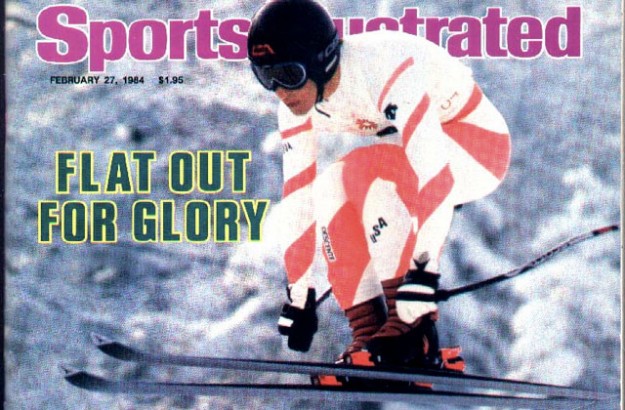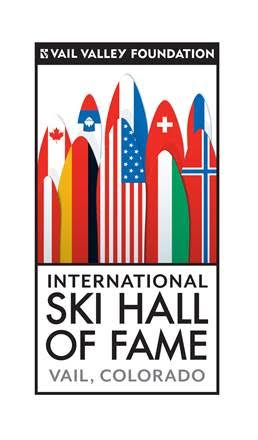Widgetized Section
Go to Admin » Appearance » Widgets » and move Gabfire Widget: Social into that MastheadOverlay zone
Celebrating 50 years of World Cup ski racing at Vail, Beaver Creek

Bill Johnson, America’s first ever men’s downhill Olympic champion, won at Aspen in 1984, 13 years before the debut of Beaver Creek’s Birds of Prey course (Sports Illustrated cover).
Thursday was the 50th anniversary of the kickoff of the World Cup of ski racing, launched on Jan. 5, 1967 by former U.S. Ski Team founder Bob Beattie and an integral part of the history of Vail and Beaver Creek ski areas.
To commemorate that momentous occasion, RealVail.com is re-posting a story that ran in the Vail Daily in March of 2014 right after the Sochi Winter Olympics. The story traced the origins of World Cup ski racing and the role the White Circus in particular and ski racing in general played in promoting first Aspen as an international winter-sports destination and then Vail and Beaver Creek (see story below or click here).
Also, here’s a press release from the Vail Valley Foundation about the latest inductee into the International Ski Hall of Fame and an event in Vail today (Friday, Jan. 6) to honor that person and unveil a new permanent monument for the Hall:
International Ski Hall of Fame will host ceremony for new, permanent structure and 2016 inductee Jan 6 at 3 p.m. in Mountain Plaza in Vail
Vail, Colo., Jan. 4, 2017 — More than 30 of Ski Racing’s biggest names have been inducted into the International Ski Hall of Fame since 1984, including luminaries like Stein Eriksen, Marc Girardelli, Andrea Mead Lawrence, Pepi Gramshammer, Franz Klammer and Tamara McKinney.
 This Friday (Jan. 6, 2017) at 3 p.m. in Mountain Plaza in Vail, the Vail Valley Foundation will announce the newest inductee into the International Ski Hall of Fame, and simultaneously reveal a new, permanent monument for the Hall. The International Ski Hall of Fame ceremony Friday afternoon is open to the public and all are welcome.
This Friday (Jan. 6, 2017) at 3 p.m. in Mountain Plaza in Vail, the Vail Valley Foundation will announce the newest inductee into the International Ski Hall of Fame, and simultaneously reveal a new, permanent monument for the Hall. The International Ski Hall of Fame ceremony Friday afternoon is open to the public and all are welcome.
The Hall’s permanent location will be at “The Edge” statue, created by artist Gail Folwell. The consecration of the monument will also be part of a worldwide celebration of 50 years of FIS World Cup ski racing happening all around the world in early January.
“Since 1984, the International Ski Hall of Fame has welcomed the most influential names in skiing, some who have been athletes, and others who have been instrumental to the sport’s growth and popularity in the United States and around the world,” said Mike Imhof, President of the Vail Valley Foundation. “We very much look forward to revealing this year’s recipient.”
In the past, International Ski Hall of Fame inductees were honored during the Vail Valley Foundation’s American Ski Classic. With that event now retired, the Vail Valley Foundation, together with Vail Resorts and the Town of Vail, will unveil a new, permanent monument to the Hall’s inductees at the special ceremony.
For more information visit vvf.org.
Now here’s that 2014 story I wrote for the Vail Daily. One important update is that Aspen did in fact land the 2017 World Cup Finals — an event last hosted in the United States in Vail in 1997. Eagle-Vail’s Mikaela Shiffrin may be vying for an overall World Cup title at that event in March. And Vail’s Lindsey Vonn, who is recovering from a broken arm but got back on snow this week at Vail, could also be back in action.
Aspen vs. Vail ski-racing rivalry dates back nearly 65 years
Aspen Mountain was only four years into its storied history as arguably America’s most iconic ski area when it hosted the first non-European World Alpine Ski Championships in 1950. Aspen ski patroller Pete Seibert made the U.S. team but wasn’t able to race due to injury.
Seibert, of course, would go on to found Vail in 1962, inviting Bob Beattie and his fledgling U.S. Ski Team to train on the slopes of Vail that first season en route to winning the first ever men’s alpine medals (Billy Kidd and Jimmie Heuga) at the 1964 Olympics in Innsbruck, Austria.
“We started with [Vail] at its opening and that year we had a downhill camp in 1963,” said Beattie, an Aspen resident. “We were so cocky we thought we didn’t have to go to Europe, and I still don’t know that we do, to be honest with you.”
Cognizant of how hosting the Worlds had put Aspen on the international map in 1950, Seibert and his marketing guru, Bob Parker, relentlessly pursued big-time ski races and chased their dreams of hosting major events like the Olympics or the World Championships.
“Pete was a ski racer and even the first year he insisted on what you would now call a World Cup race here,” said former Vail Mayor Rod Slifer, who met Seibert while teaching skiing in Aspen and later joined him in Vail.
“[Steamboat legend and Kitzbuehel downhill winner] Buddy Werner and all of those guys were here and it was a big-time race, and then when we got big enough and well-known enough, then international racing was an important part of getting Vail on the map,” Slifer added.
The very first season of the World Cup circuit, Vail hosted a giant slalom won by France’s Jean-Claude Killy in March of 1967. Heuga, who was later diagnosed with multiple sclerosis and founded the local Heuga Center (now Can Do MS), was second in that race.
Vail became a regular stop on the World Cup circuit in 1983, when American’s Phil Mahre and Tamara McKinney won GS races en route to simultaneously claiming the overall titles that season. Seibert by then had left the company he founded, but World Cup racing was here to stay.
Aspen, meanwhile, hosted men’s and women’s World Cup races the second season of the circuit’s existence, with Canadian great Nancy Greene sweeping all three disciplines and Stowe, Vt., and Steamboat legend Kidd winning the slalom in March of 1968.
Aspen again hosted races in 1976, with all-time World Cup winner Ingemar Stenmark of Sweden claiming the slalom and Austrian great Franz Klammer taking the downhill, but it would be another five years before it became a regular World Cup stop in 1981.
Since then Aspen has fairly regularly hosted races, but the men haven’t been there since 2001 when a young Bode Miller was second in slalom, and while Vail will host its third World Championships next season (Feb. 2-15, 2015), the big event second only to the Olympics has never returned to Aspen.
“For a town that prides itself on being jealous of Vail about absolutely nothing, not having the World Championships, much less even a men’s downhill anymore, really hurts,” said Roger Marolt, a columnist for the Aspen Times and the son of Aspen’s first Olympian, the late Max Marolt. “We don’t like to admit it, but our bid for the 2017 World Cup finals speaks volumes in a whisper over the issue.”
Aspen is trying to host the season-ending World Cup Finals that year, an event that includes both men and women and often decides the circuit’s overall and season discipline titles. The last time an American resort hosted the finals was Vail in 1997.
By comparison, the World Championships are a two-week, mid-season extravaganza held every two years to determine the sport’s greatest racers between the four-year span of the Winter Olympics.
Vail and Aspen are the only two North American resorts to host the Worlds, and McKinney, with her gold in the combined in 1989 at Vail, is only American who’s ever won a world championship medal of any color on U.S. snow.
And those Worlds only happened because Aspen pulled out as the U.S. candidate at the 11th hour, according to Vail Valley Foundation Chairman Harry Frampton, leaving Vail about a week to pull together the winning bid. Vail learned from those Worlds and won them again in 1999, building a now iconic men’s downhill course at Beaver Creek called the Birds of Prey.
“I never thought we’d do three [Worlds], but it’s exciting, and this one’s going to be the best,” Frampton said of 2015. “We’re still a ski town, any way you look at it — that’s the heart. So to be able to host the premier event means it’s a part of our DNA. That’s why we’ll have 3,000 volunteers working. It is who we are, and I think that’s pretty darn cool.”
Former Vail owner George Gillett said those 1989 Worlds did two key things.
“The year after the World Alpine Ski Championships we went to 13 percent international skier visits [compared to 2 percent the year before], and that really validated Vail as an international destination resort,” Gillett said, and it was at those championships that Gillett saw Seibert and invited the Vail founder, former ski racer and Olympic dreamer back into the company fold.
“I’d been waiting quite a while for something like this to happen,” the late Seibert wrote in his 2000 book “Triumph of a Dream.”
This story was produced for the Colorado Ski & Snowboard Museum and a version first ran in the Vail Daily. The museum is located on the third level of the Vail Village parking structure, adjacent to Vail Village Covered Bridge. It is open daily from 10 a.m. to 6 p.m. For more information, call 970-476-1876 or go to www.skimuseum.net.
David O. Williams
Latest posts by David O. Williams (see all)
- In governor’s primary race, Bennet, Weiser sparring over who is tougher on Trump - July 15, 2025
- The O. Zone: Battle for public lands just now heating up, much like our atmosphere - July 14, 2025
- Immigrant rights groups push Colorado AG Weiser for probes into violations of ICE collaboration law - July 11, 2025


